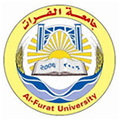آخر الأخبار
مقدرة الذرة الصفراء على الاستخلاص الحيوي للعناصر الثقيلة من الترب الملوثة
2010, Volume 1, issue 4,pp 363-378| Cite as
Potential Zea mays for phytoextraction of heavy metals form contamineted soils
| authors |
Mohamed Abdullah Al Siddik |
| Abstract |
Remediation of soil pollution is one of the many current environmental challenges. Anthropogenic activity has resulted in the contamination of extended areas of land, the remediation of which is both invasive and expensive by conventional means. Phytoextraction of heavy metals from contaminated soils has the prospect of being a more economic in situ alternative. In addition, phytoextraction targets ecotoxicologically the most relevant soil fraction of these metals, i.e. the bioavailable fraction. Greenhouse experiments were carried out pots experiments to evaluate the potential of Zea mays for phytoextraction of heavy metals, with or without the use of chelator (EDTA- ethylene diamine succinic acid- or EDDS- ethylene diamine succinic acid-). A soil that have heavy metals pollution, with high organic matter as a result of the additions of sewage sludge was used in the experiments. 40 days after planning of Zea mays, the soils of pots were received additions of 50 mmol/ kg of EDTA and EDDS. The plants were died 11 days after addition EDDS, and 20 days after addition EDTA. Results showed that the accumulation of heavy metals in plants as a result of the additions of different chelator used. The low observed shoot concentrations of heavy metals in control plants. EDDS Phytoextracte more of heavy metals from soil to plants than EDTA.Key words: Phytoextraction, heavy metals, EDTA, EDDS, SOIL POLLUATION, Zea mays |
| الكاتب |
محمد عبدالله الصديق |
| الملخص |
تعتبر معالجة الترب الملوثة واحدة من أكثر التحديات البيئية. ويعتبر النشاط البشري أحد أهم عوامل ازدياد المساحة الموبوءة من الترب. ويلاحظ أن معالجة الترب الملوثة بالطرائق التقليدية مجهدة وذات تكاليف عالية، لذلك تتجه أنظار الباحثين لاستخدام طريقة الاستخلاص الحيوي (النباتي) phytoextracion . للمعادن الثقيلة من الترب الملوثة بها. وتعتبر هذه الطريقة من الطرائق المبشرة، وهي أكثر اقتصادية وتنفذ ضمن المواقع، إضافة لذلك، يعتبر الاستخلاص الحيوي مسار لإزالة السمية البيئية لمكونات التربة من هذه المعادن ضمن الأجزاء المتاحة حيوية. نفذت الدراسة ضمن بيت زجاجي، وفي أصص من أجل تقييم مقدرة الكتلة الحيوية لنبات الذرة الصفراء على الاستخلاص الحيوي للمعادن الثقيلة من التربة. تم استخدام تربة ملوثة بالعناصر الثقيلة نتيجة إضافة الحمأة لها لفترات طويلة وذات محتوى مرتفع من المادة العضوية. بعد 40 يوما من الزراعة تمت إضافة مخلبات عضوية (EDTA (Ethylenediamine -tetra acetic acid) و(EDDS(Ethylenediamine- disuccinic acid للأصص بمعدل 50 ملليمول/ كغ تربة مع الاحتفاظ بشاهد. لم يتأثر نمو نباتات الشاهد ، بينما ماتت النباتات المعاملة تربتها با EDDS بعد 11 يوما والمعاملة ب EDTA بعد 20 يوما. ولوحظ أن محتوی التنبات الشاهد من العناصر الثقيلة كان منخفضة، كما لوحظ ازدياد الاستخلاص الحيوي للمعادن الثقيلة من الترب المعاملة بـEDTA&EDDS مع الزمن حتی موت النبات.
الكلمات المفتاحية: استخلاص حيوي - معادن تقيلة - مخلبات عشوية- حمأة- ترب ملوثة- الذرة الصفراء |














